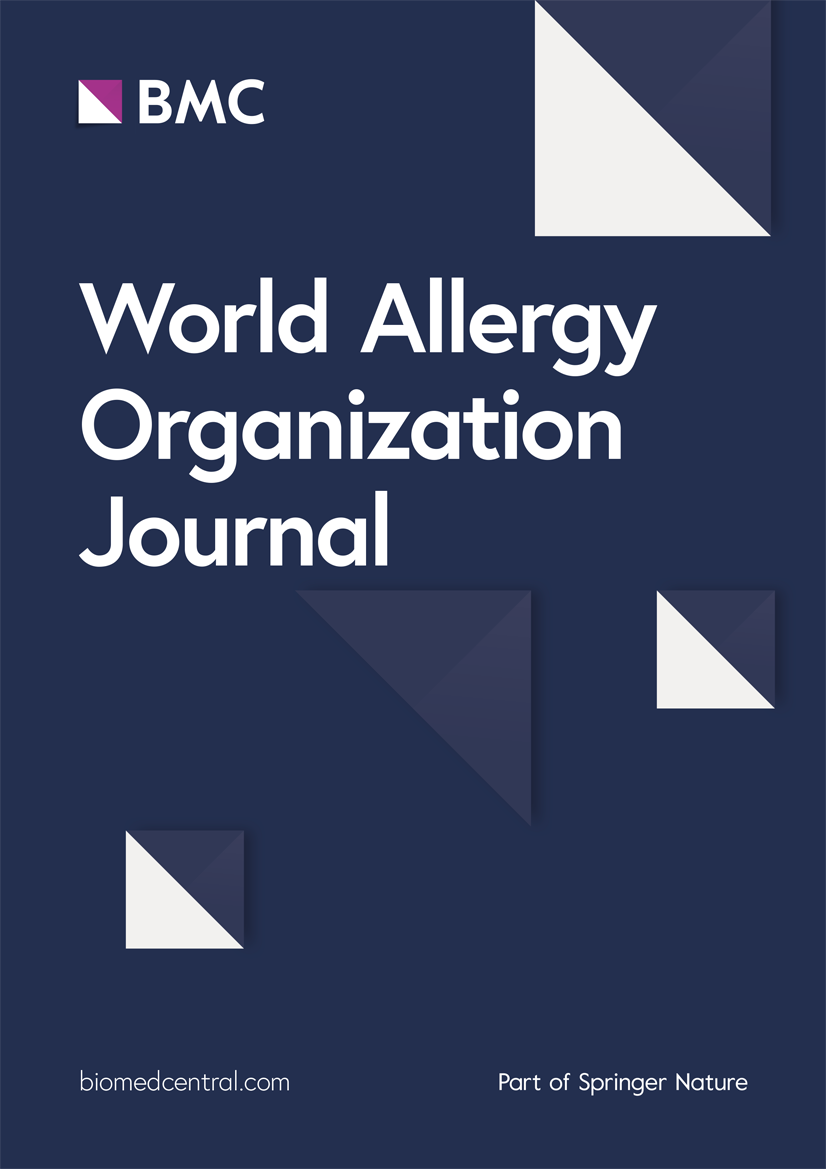慢性自发性荨麻疹伴或不伴血管性水肿的诊断测试:该做、不该做和可能做的
IF 4.3
2区 医学
Q2 ALLERGY
引用次数: 0
摘要
慢性自发性荨麻疹(CSU),伴或不伴血管性水肿,是异质性的,由不同的内型和表型组成。由于急性荨麻疹大多会自发消退,除非有临床病史或体格检查的支持,否则不需要常规检测和实验室评估。随着omalizumab的出现,人们对识别生物标志物以预测对这种治疗的反应产生了浓厚的兴趣。在研究生物标志物作为预后因子的过程中,出现了几种CSU表型和内型,这表明需要针对非ige机制途径的新疗法来控制对最新国际指南目前推荐的治疗无反应的患者的症状。目前的数据支持外周嗜酸性粒细胞、通过嗜碱性组胺释放测定的抗IgE或FcεRI α亚基的自身抗体、总IgE水平和抗甲状腺过氧化物酶(TPO)的IgG自身抗体作为开始治疗前区分1型自身免疫性(自身过敏性)CSU和2b型自身免疫性CSU的特异性标志物,特别是奥玛珠单抗。在许多研究新疗法的临床试验中,这些标记物已被作为探索性终点,或用于重新利用现有生物制剂来确定应答者和无应答者,但目前这些数据还不完全清楚。因此,需要进一步的随机对照研究和现实世界的研究,以更确切地证明,当CSU患者最初出现或确定他们对高剂量第二代h1抗组胺药(SGAH)无反应时,在将其纳入循证CSU指南之前,订购这些测试的效用。本综述探讨了在CSU患者的初步评估中获得诊断测试以预测治疗反应的价值。本文章由计算机程序翻译,如有差异,请以英文原文为准。
Diagnostic testing for chronic spontaneous urticaria with or without angioedema: The do's, don't and maybe's
Chronic spontaneous urticaria (CSU), with or without angioedema, is heterogeneous and comprised of different endotypes and phenotypes. Because acute urticaria will mostly resolve spontaneously, routine testing and laboratory evaluation is not required unless supported by the clinical history or physical examination. With the advent of omalizumab, there has been a surge of interest in identifying biomarkers that could predict response to this treatment. In the process of investigating biomarkers as prognosticators, several CSU phenotypes and endotypes have emerged, which have made it evident that novel therapies targeting non-IgE mechanistic pathways are needed to control symptoms in patients unresponsive to the currently recommended therapies by the most recent international guidelines. The current data support peripheral eosinophils, autoantibodies against IgE or FcεRI α subunit measured by basophil histamine release assays, total IgE levels and IgG autoantibodies against thyroid peroxidase (TPO) as specific markers to differentiate type 1 autoimmune (autoallergic) CSU from type 2b autoimmune CSU before starting treatment especially with omalizumab. These markers have been included as exploratory endpoints in many clinical trials investigating novel therapies or for repurposing existing biologics to determine responders and non-responders, but these data are not completely clear at this time. Therefore, further randomized controlled studies and real-world studies are needed to demonstrate more conclusively the utility of ordering these tests in CSU patients when they initially present or when it is determined they are not responsive to high dose second generation H1-antihistamines (SGAH) before they can be included in evidence-based CSU guidelines. This review examines the value of obtaining diagnostic tests in the initial evaluation of CSU patients to predict treatment response.
求助全文
通过发布文献求助,成功后即可免费获取论文全文。
去求助
来源期刊

World Allergy Organization Journal
Immunology and Microbiology-Immunology
CiteScore
9.10
自引率
5.90%
发文量
91
审稿时长
9 weeks
期刊介绍:
The official pubication of the World Allergy Organization, the World Allergy Organization Journal (WAOjournal) publishes original mechanistic, translational, and clinical research on the topics of allergy, asthma, anaphylaxis, and clincial immunology, as well as reviews, guidelines, and position papers that contribute to the improvement of patient care. WAOjournal publishes research on the growth of allergy prevalence within the scope of single countries, country comparisons, and practical global issues and regulations, or threats to the allergy specialty. The Journal invites the submissions of all authors interested in publishing on current global problems in allergy, asthma, anaphylaxis, and immunology. Of particular interest are the immunological consequences of climate change and the subsequent systematic transformations in food habits and their consequences for the allergy/immunology discipline.
 求助内容:
求助内容: 应助结果提醒方式:
应助结果提醒方式:


